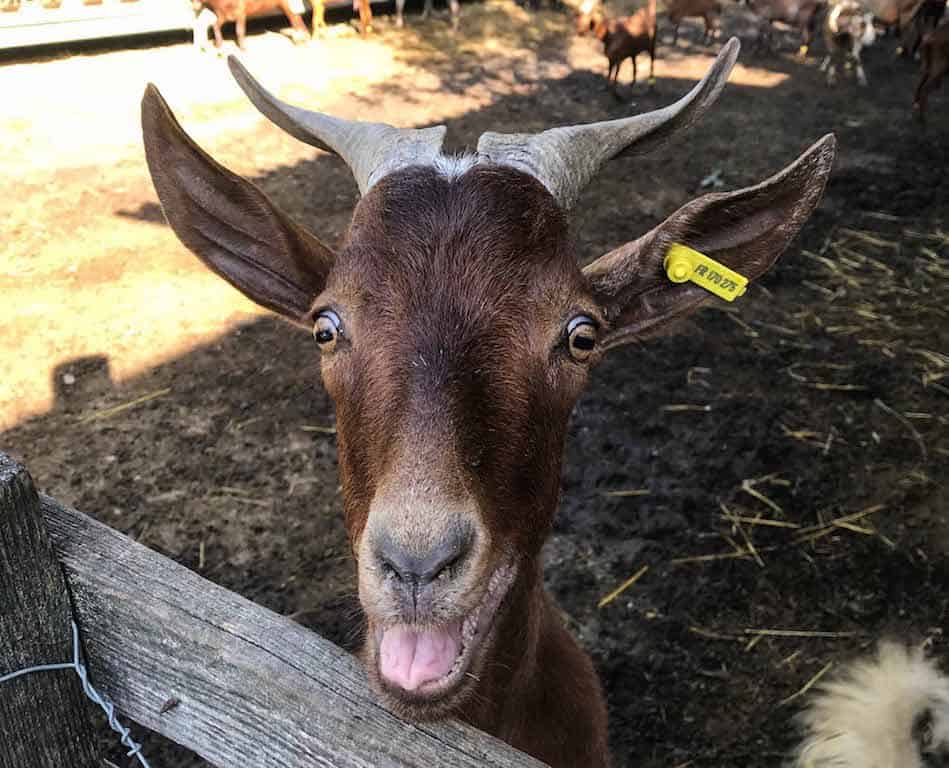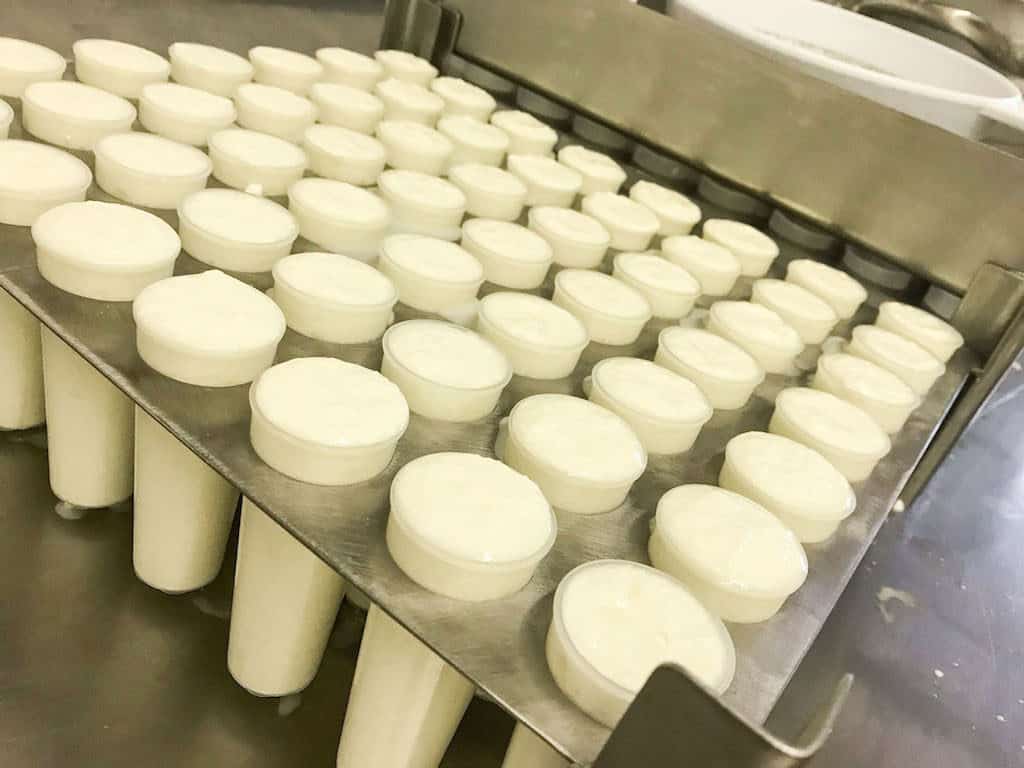
Last March, Brousse du Rove from the region of Provence in France became the newest AOC in cheese. In the streets of Marseille in the early 1900s, it was common to hear sellers shouting about its arrival down the streets. They would cry in Provencal dialect “Lei brousso doù Rove!” letting the locals know of their presence in a way not unlike the jingle of an ice cream van.
The cheese is made solely using the milk of the Rove goat, named after the village of le Rove, just west of Marseille, where they were first domesticated. The goats were originally brought to France by the Phoenicians, where they interbred with local goats in Provence. Rove goats are easily recognizable with their long, twisted horns which can grow to over a meter in length.
Style
Brousse du Rove is a fresh, unsalted cheese that is sold in small conical molds at markets and cheese shops around France, most densely in the region of Provence where it is made. Since it is such a fresh cheese, it must be sold within eight days of production. As a result of its short shelf life, it doesn’t tend to travel far. In addition, such a small amount is produced that the majority is sold directly at the farms or at markets in the area.
Production
To make the cheese, milk is heated up to 90 degrees. The milk is then cooled to 70-75 degrees before vinegar is added to initiate the flocculation that transforms the milk into cheese. Unlike many cheeses, Brousse du Rove doesn’t use rennet—in fact, it is the first AOC French cheese that uses just flocculation and not rennet.
A sieve is used to collect the solids, which are placed into cone-shaped molds once the makers are happy with the texture. After draining for a little longer, the cheeses can be sold as soon as they have had time to cool. The production period starts at the end of January into early February and production is prohibited in the month of December.
The production of Brousse du Rove relies largely on experiential knowledge. Often, the measurements and timings are all done by eye—there is no measuring equipment, just a wealth of experience and know-how. The recipe, in theory, is simple; however, from watching the process, it becomes clear that there is a completely unwritten manual within the cheesemakers’ heads, which they use to judge tactically and visually when each stage is complete.
Flavor Profile
In general, the cheeses are sweet, perfumed with native flora naturally present in the milk, and with a light capric flavor and saline finish.
However, each maker of Brousse du Rove produces a slightly different cheese. That is because there are many variables that contribute to differences in flavor throughout the season and at each farm.
The main difference is feed. Each farm has a different micro-terroir with differing vegetation contributing to diverse flavor profiles within the milk. Still, goats are funny creatures and Rove goats like to eat the spiny, brambly vegetation surrounding the region of Provence. They even prefer this to grass.
Interestingly, this can have a negative effect on flavor, so the goats must be kept under watch and moved around fields according to the seasons of specific plants. Marie-Ange Gouiran, who makes Brousse du Rove, explained in a recent France Inter radio interview that this past June, there was a lot of le genêt, a species of plant called Broom, around. In her experience, the more of this material in the goats’ feed makes for bitter notes in the finished cheese, so the farms must ensure they don’t eat too much.
Producers
There are just eight producers of Brousse du Rove AOC. This is not finite, however, and the cheesemakers in the area would love for more to get involved to increase the numbers of Rove goat farms and the amount of Brousse du Rove production.
André and Marie-Ange Gouiran are the last remaining producers of Brousse du Rove actually based in the village of le Rove. With their 400 goats—all of whom they milk by hand—they are quite a large establishment. By comparison, Francois and Sandrine Borel in la Roque d’Antheron have just 80 beautiful goats, all raised organically.

The New AOC
The new AOC was approved earlier this year after a difficult few years of trying. In 2007, a group of local shepherds joined together to defend the traditional cheese and apply for its regulatory protection. Brousse du Rove had many imitations in the area, all piggybacking off the demand for the original.
The cheese received a Slow Food Presidium 2007, which was the first step to its protection from imitation. However, the cheese was granted an AOC protection earlier this year. The AOC protection stipulates that:
- The farm must have a herd of solely Rove goats and that there cannot be goats of any other breed present on the farm.
- Milking, cheese production, and packaging must all happen in the Bouches-du-Rhone, extreme southern areas of Vaucluse, and to the test of Var.
- Within this production area, the goats must graze outdoors, on average for the year, five hours per day in the wooded scrublands of the above regions.
To learn more about Brousse du Rove, check out the new publication entitled Brousse du Rove: L’appel des collines, written by Mayalen Zubillaga. For French speakers, try a couple of great podcasts on France Inter and France Culture radio websites.
Photography by Emma Young.






